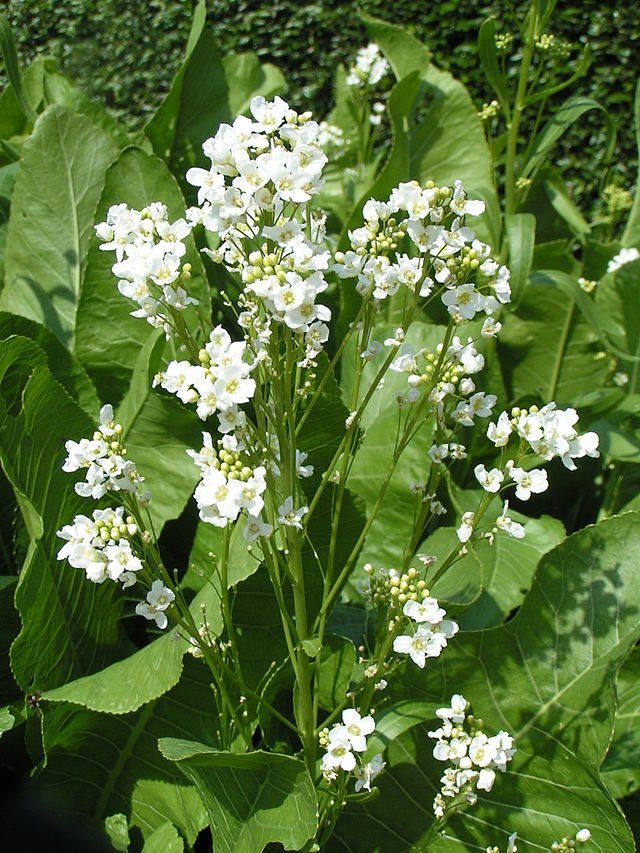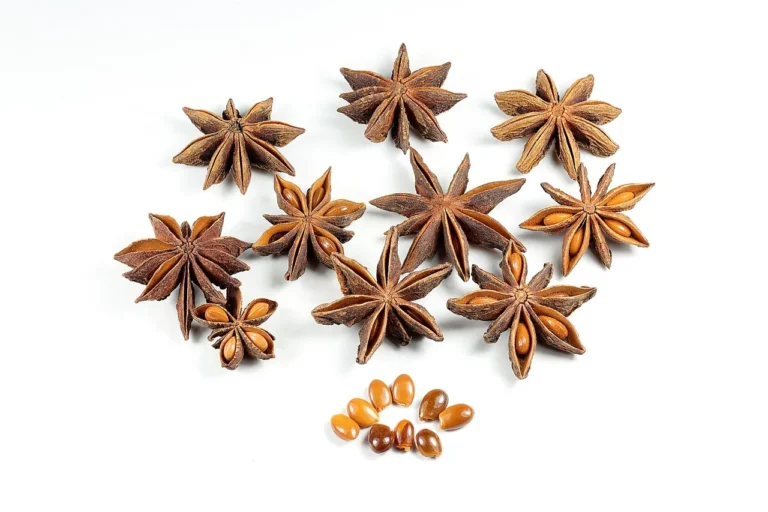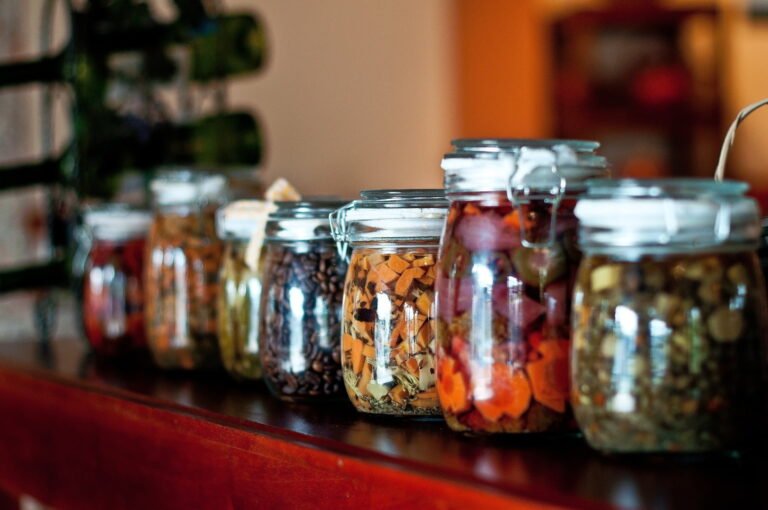Cayenne Peppers: Tricks to Fire Up Your Garden
Cayenne peppers are a staple in kitchens around the world, known for their vibrant colour, fiery heat, and versatility in both culinary and medicinal applications. Growing cayenne peppers at home is not only rewarding but also adds a spicy kick to your home garden. This guide will cover everything you need to know to successfully grow, care for, and harvest cayenne peppers, ensuring a bountiful supply of this spicy chili for your kitchen.
Understanding Cayenne Peppers
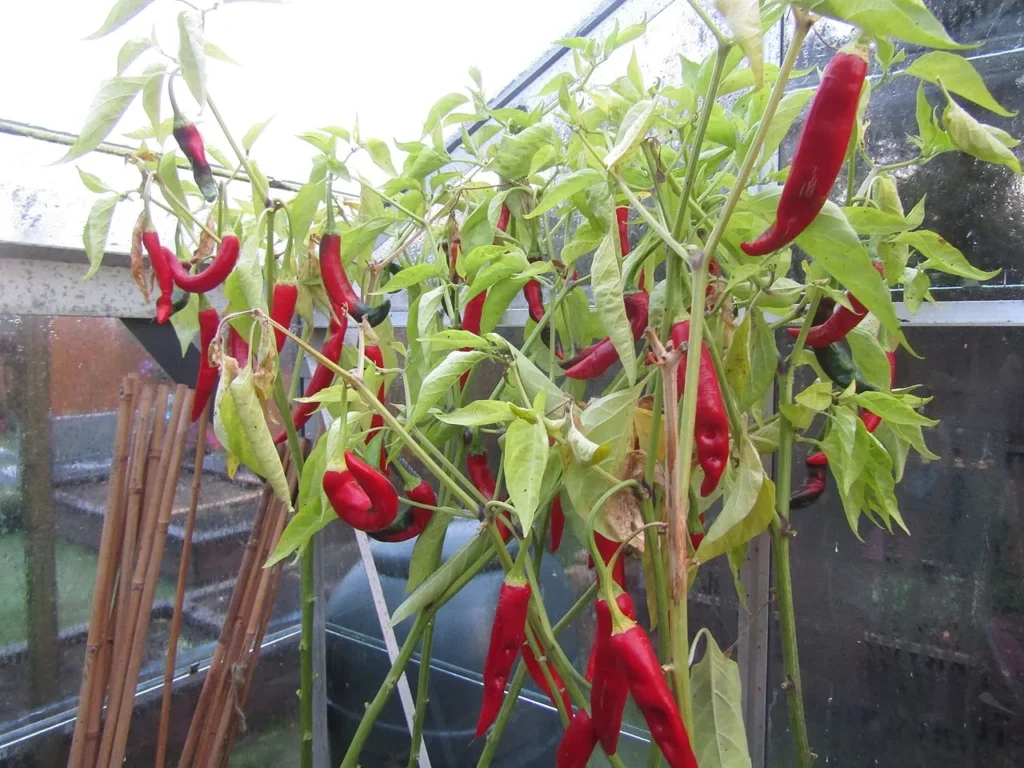
Cayenne peppers belong to the Capsicum annuum species and are characterized by their long, slender shape and bright red color when fully ripe. They pack a significant punch in terms of heat, typically ranging from 30,000 to 50,000 Scoville Heat Units. Beyond their culinary uses, cayenne peppers are rich in vitamins A and C, among other nutrients, and have been used in traditional medicine for their circulatory and digestive benefits.
Origin and Characteristics: Cayenne peppers originate from South America but have become a staple in cuisines worldwide. They are distinguished by their thin, pointed shape, ranging from 2 to 5 inches in length, and mature from green to a deep, glossy red.
Culinary and Medicinal Uses: In the kitchen, cayenne peppers are celebrated for their ability to elevate the heat and flavour of sauces, marinades, and spice blends. Medicinally, they’re used in capsulated form or as a cream for their anti-inflammatory properties and to support circulatory health.
Choosing Your Cayenne Peppers
When selecting cayenne pepper varieties to grow, consider factors such as your climate, desired heat level, and growing space. Popular varieties include ‘Large Red Thick,’ known for its high yield and moderate heat, and ‘Golden Cayenne,’ which offers a unique colour and slightly less heat. Researching the specific needs and characteristics of each variety can help ensure a successful harvest.
Large Red Thick Cayenne Pepper
Characteristics
The ‘Large Red Thick’ cayenne pepper variety is celebrated for its robust size and significant thickness compared to the standard cayenne peppers. These peppers typically grow to about 5 to 6 inches in length, featuring a bright red color when fully ripe. Their flesh is thicker, making them ideal for a variety of culinary uses where a meatier texture is desired.
Flavor and Heat
While still delivering the heat cayenne peppers are known for, the ‘Large Red Thick’ has a slightly lower Scoville rating than its thinner counterparts. This makes it a versatile option for those who enjoy a manageable level of spiciness. The rich, slightly smoky flavour enhances sauces, salsas, and marinades, providing depth and warmth without overwhelming the dish.
Growing Tips
This variety thrives in warm, sunny conditions and requires well-draining soil to prevent root rot. Due to their thicker flesh, ‘Large Red Thick’ peppers might take a bit longer to mature. Providing consistent water and mulching around the plants will help maintain soil moisture and temperature, encouraging healthy growth and a bountiful harvest.
Golden Cayenne Pepper
Characteristics
The ‘Golden Cayenne’ variety stands out with its striking golden-yellow fruits that add a splash of colour to both the garden and the plate. Similar in shape and size to traditional red cayennes, these peppers grow about 4 to 6 inches long but with a unique golden hue that persists through maturity.
Flavor and Heat
‘Golden Cayenne’ peppers offer a similar heat profile to the red varieties, packing a spicy punch that cayenne peppers are celebrated for. The flavour is bright and tangy, with a slightly fruity undertone that complements a wide range of dishes. These golden beauties are perfect for adding visual interest and a spicy kick to fresh salsas, pickles, and culinary creations.
Growing Tips
Like most cayenne peppers, the ‘Golden Cayenne’ prefers full sun and well-drained soil. They are relatively drought-tolerant but benefit from regular watering during dry spells. Stake the plants if necessary to support the weight of the fruit and protect them from strong winds. ‘Golden Cayenne’ peppers are not only a delight for the eyes but also attract pollinators, adding to the biodiversity of your garden.
Purple Cayenne Pepper
Characteristics
The ‘Purple Cayenne’ pepper variety is a stunning addition to any garden, featuring slender, vibrant purple peppers that mature to a rich, dark red. The plants are compact and bushy, making them ideal for garden beds or container gardening. The purple peppers are not only visually striking but also add an unexpected pop of colour to culinary dishes.
Flavor and Heat
Offering a similar heat level to the traditional red cayenne, the ‘Purple Cayenne’ delivers a spicy yet slightly sweeter flavour profile. The unique coloration does not affect its heat, ensuring that these peppers still pack a punch. They are excellent for fresh eating, cooking, or as a colourful garnish.
Growing Tips
‘Purple Cayenne’ peppers prefer a sunny location and rich, well-draining soil. They are relatively easy to grow and can be more tolerant of cooler temperatures than some other varieties. Like other cayenne peppers, maintaining even soil moisture without overwatering is key to healthy plants and a productive harvest. The striking purple peppers can also be dried and ground into a beautiful and spicy powder that adds both heat and colour to dishes.
Joe’s Long Cayenne Pepper
Characteristics
‘Joe’s Long Cayenne’ is renowned for its impressively long, slender peppers that can grow up to 10-12 inches in length. These vibrant red chilies dangle from the plant like festive garlands, adding ornamental value to the garden. The plants themselves are robust and can grow quite tall, providing a bountiful harvest throughout the growing season.
Flavor and Heat
This variety packs the classic cayenne heat, with a Scoville rating that can vary but generally offers a spicy kick that cayenne enthusiasts love. The peppers have a thin flesh with a crisp texture, making them perfect for drying and grinding into powder or using fresh to add heat to dishes.
Growing Tips
‘Joe’s Long Cayenne’ peppers thrive in full sun and well-draining soil. They can be more drought-resistant than some other varieties but will produce the best yield with consistent moisture. These plants can benefit from staking or support, especially as the long peppers begin to mature, to prevent the branches from bending or breaking under the weight. This variety is particularly well-suited for drying, offering an excellent way to preserve the harvest and enjoy the spicy flavour year-round.
When selecting a variety, consider the growing conditions in your area and the flavour profile you prefer. Some varieties may be better suited to container gardening, while others thrive in open garden beds.
Planting Cayenne Peppers
The ideal planting time for cayenne peppers is after the last frost when soil temperatures consistently exceed 60°F (16°C). In cooler climates, starting seeds indoors 6-8 weeks before the last frost date is recommended. Cayenne peppers thrive in well-draining soil with a pH between 6.0 and 6.8. Whether starting indoors or sowing directly in the garden, ensure your plants have enough space to grow, typically about 18-24 inches apart.
Timing: Start seeds indoors 6-8 weeks before the last frost date, or sow directly outdoors in warmer climates once the soil temperature reaches at least 60°F.
Soil Preparation: Choose a sunny spot with well-draining soil, enriched with compost or well-rotted manure to provide a nutrient-rich foundation.
Caring for Cayenne Pepper Plants
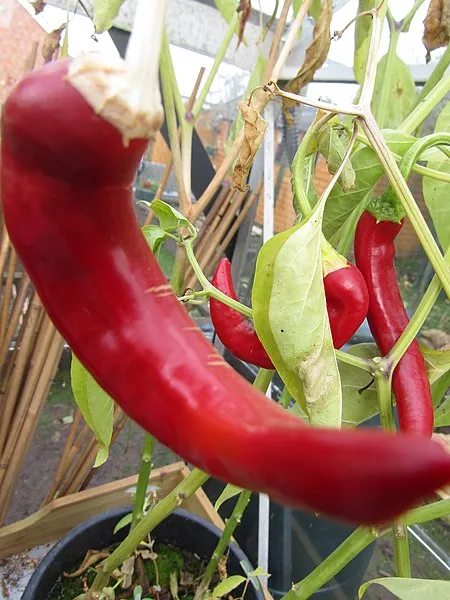
Cayenne peppers require consistent care to flourish:
- Watering: Keep the soil evenly moist, especially during dry spells. Over-watering can lead to root rot, while under-watering can stress the plant and reduce yield.
- Sunlight: Full sun is crucial for cayenne peppers, so aim for at least 6-8 hours of direct sunlight daily.
- Fertilizing: Use a balanced fertilizer at planting time and side-dress with a high-potassium fertilizer to encourage fruiting.
Pest and Disease Management
Aphids and Spider Mites: Treat infestations with neem oil or insecticidal soap, focusing on the undersides of leaves where pests commonly reside.
Powdery Mildew and Bacterial Spot: Ensure good air circulation and practice crop rotation. Remove and destroy infected leaves to prevent the spread of disease.
Harvesting Cayenne Peppers
Cayenne peppers are typically ready for harvest 70-80 days after planting. The peppers should be firm and brightly coloured. To store, you can leave them fresh, dry them, or freeze them for later use. Drying is particularly popular, as it allows you to make cayenne powder.
Harvest Timing: Peppers are ready to harvest when they’re firm and the skin is a bright, glossy red. Use garden shears to cut the peppers, leaving a short stem attached.
Storage Methods: Fresh cayenne peppers can be stored in the refrigerator for up to a week. For longer preservation, consider drying them whole or chopping and freezing in airtight containers.
Enjoying Your Cayenne Peppers
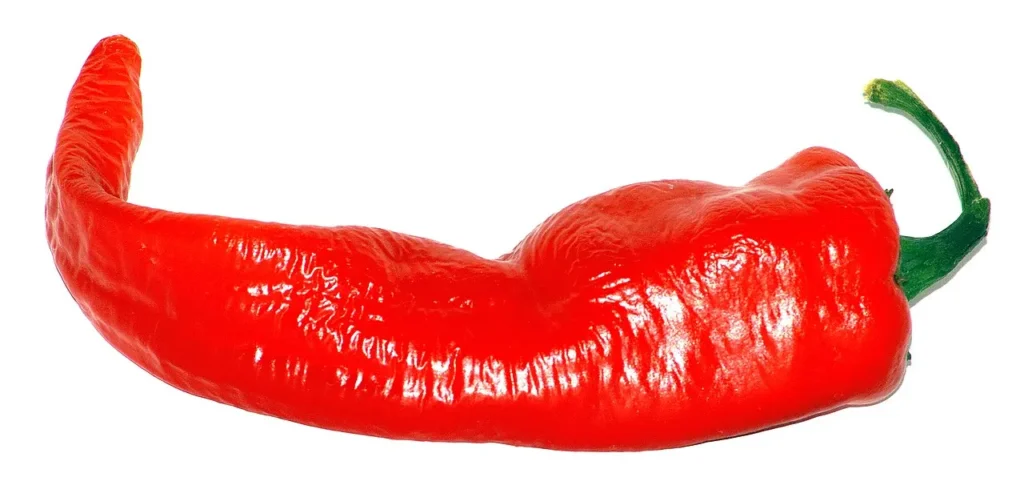
From adding heat to sauces and stews to making your own cayenne pepper powder, there are countless ways to enjoy your harvest. Cayenne peppers can elevate the flavour of many dishes, offering both heat and depth.
Culinary Uses: Experiment with adding freshly chopped cayenne peppers to salsa, curries, and homemade hot sauces. Dried and ground cayenne pepper makes a versatile spice for seasoning dishes.
Homemade Cayenne Pepper Powder: Dry the peppers, then grind them into a fine powder using a spice grinder. Store in an airtight container and use as needed to add heat to your favourite recipes.
Companion Planting for Cayenne Peppers
The Benefits of Companion Planting
Companion planting involves strategically placing plants together in the garden to enhance growth, deter pests, and increase yields. For cayenne peppers, certain companions can provide natural pest control, improve pollination, and even enhance the flavour of your peppers.
Ideal Companions for Cayenne Peppers
- Basil: Repels pests like thrips and mosquitoes and may enhance the flavour of your peppers.
- Onions and Garlic: Their strong scents deter a variety of pests and can help protect your cayenne peppers from insect damage.
- Carrots: Help to break up the soil with their deep roots, making it easier for pepper roots to grow.
- Marigolds: The vibrant flowers of marigolds can attract beneficial insects and repel nematodes and other pests.
Plants to Avoid
- Beans and Peas: Legumes tend to share common pests with peppers, which could lead to increased infestations.
- Fennel: Known to inhibit the growth of many plants, including peppers, due to its strong allelopathic properties.
Frequently Asked Questions
Q: How long does it take for cayenne peppers to grow?
A: From planting, cayenne peppers typically take about 70-90 days to reach maturity and be ready for harvest, depending on the variety and growing conditions.
Q: Can cayenne peppers be grown in pots?
A: Absolutely! Cayenne peppers are well-suited to container gardening. Ensure you use a pot that is at least 12 inches deep and has good drainage. Regular watering and fertilization are key to success.
Q: Why are my cayenne pepper leaves turning yellow?
A: Yellowing leaves can be a sign of overwatering, nutrient deficiency (especially nitrogen), or a pest infestation. Check the soil moisture and consider a soil test to determine if additional fertilization is needed.
Q: How can I make my cayenne peppers hotter?
A: The heat of cayenne peppers can be influenced by several factors, including variety, sunlight, and stress. Limiting water slightly (without causing the plant to wilt) and ensuring plenty of sunlight can help increase capsaicin levels, making peppers hotter.
- “The Pepper Garden” by Dave DeWitt and Paul W. Bosland: This comprehensive guide offers in-depth information on growing a variety of peppers, including cayennes. It covers everything from planting and care to pest management and harvesting, making it a valuable resource for both novice and experienced gardeners.
- Pepper Joe’s Growing Tips: An online resource that specializes in hot peppers, including cayenne peppers. Their website features a wealth of articles, growing guides, and tips for maximizing your pepper harvest. From soil preparation to harvesting and saving seeds, Pepper Joe’s offers practical advice for every stage of the growing process. Visit their website at Pepper Joe’s.
These resources can provide you with additional guidance and inspiration as you embark on or continue your journey with cayenne peppers. Whether you’re looking to delve into the finer details of pepper cultivation or simply seeking practical advice for your garden, these references are sure to be of great help.
Final Thoughts
Growing cayenne peppers is a rewarding endeavour that spices up your garden and your cooking. By following the guidelines in this guide, you can enjoy a successful harvest of these vibrant and spicy chilis. Whether you’re a seasoned gardener or a novice, the world of cayenne peppers offers a flavourful adventure worth exploring.




